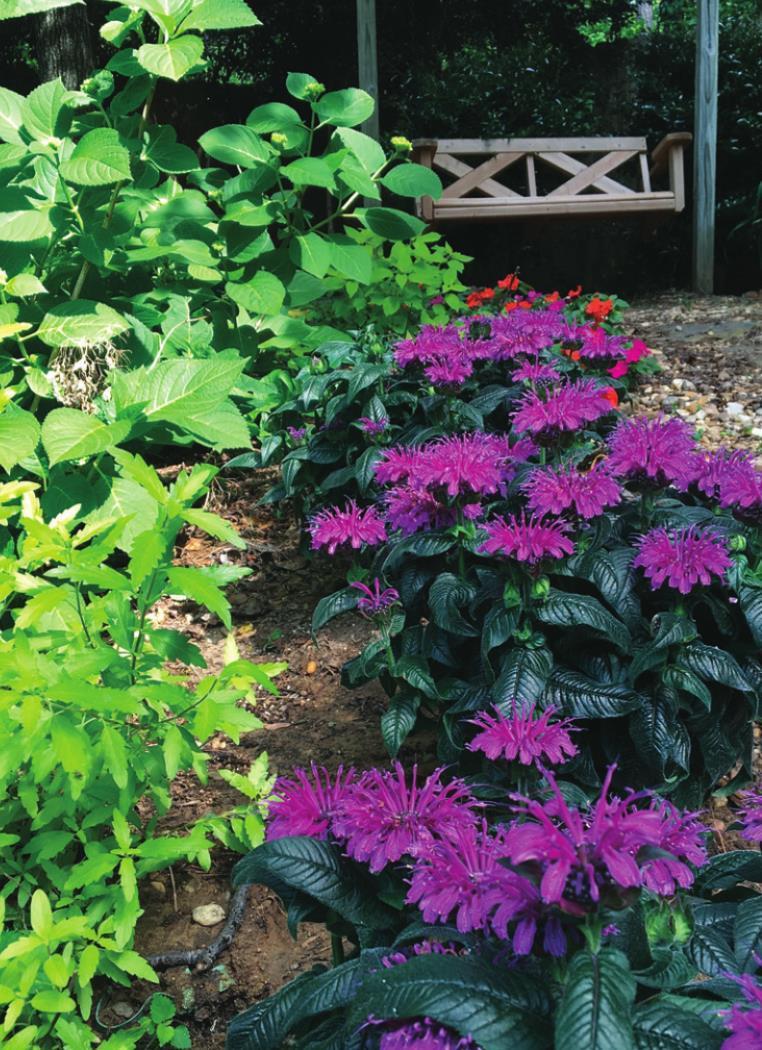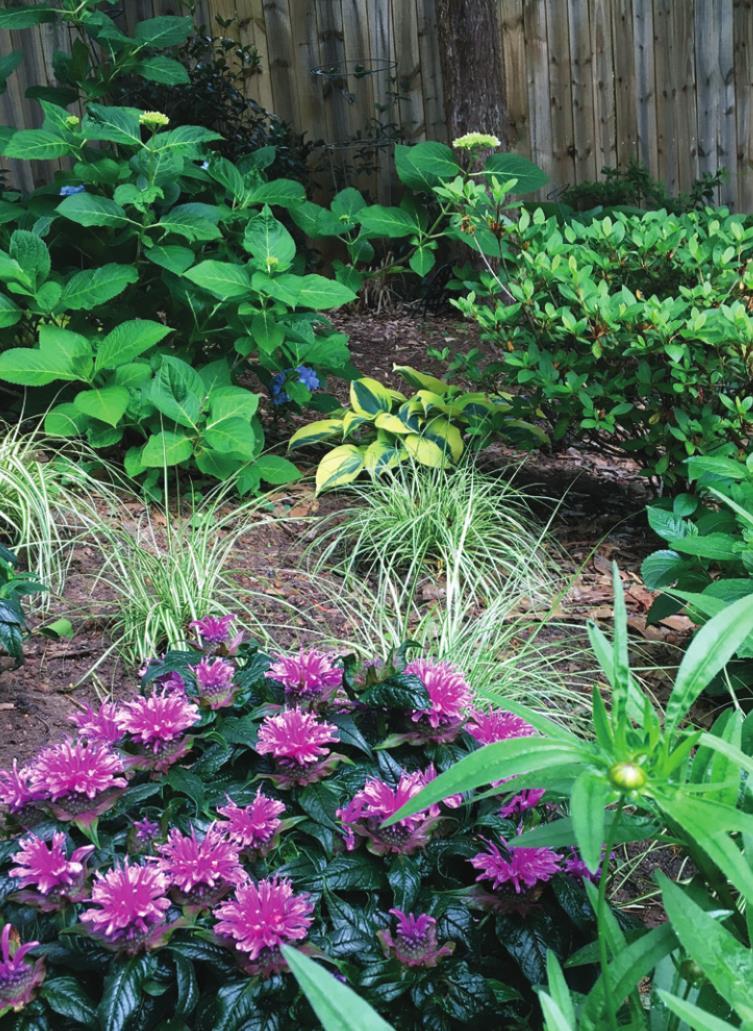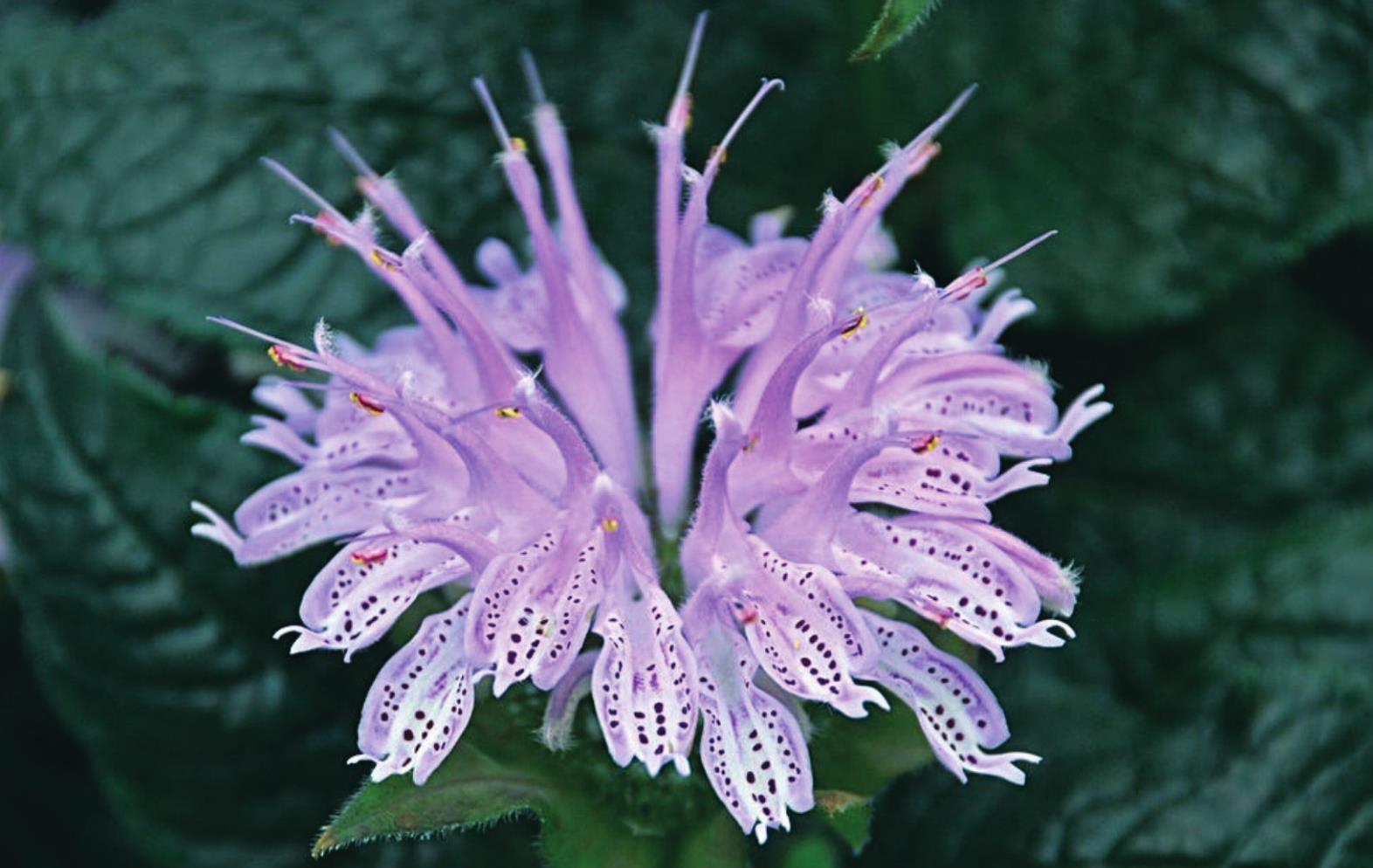
The Garden Guy is using Leading Lady Plum with Sunshine gold-leafed caryopteris and Rockin Golden Delicious salvia.

Here Leading Lady Orchid is showing out in partnership with Evergold Carex grass.

This close-up a Leading Lady Lilac blossom looks like nature’s version of a firework. Photos by Norman Winter
Leading lady headlines Year of the Monarda

Stop the presses, throw all of your preconceived notions about the monarda or bee balm out the door. I swear, I have had marigolds taller than these new monardas. I have more flowers now on my monardas than I normally get from an entire season’s bloom. I am talking about the Leading Lady series.
First, know that 2021 is the National Garden Bureau’s Year of the Monarda. Whether you are talking Monarda didyma, Monarda fistulosa or Monarda punctata, they are all US natives. That means these new hybrids coming to us from Proven Winners are native DNA.
My past Monardas have been tall, I might say even a little gangly by mid-season, and blooms here and there, yet I was still in love with them. Never in my wildest dreams did I conceive of Monarda that would be 14-inches tall with a 28-inch spread. Never did I think we would have a Monarda that you would use in front of the border in combinations.
There are currently three colors in the Leading Lady group: Lilac, Orchid and Plum. But next year we’ll see the addition of Amethyst, Pink and Razzberry, which I can’t wait to get my hands on. Just like all of the other Monardas, the bee balm plants bring in the bees, butterflies and hummingbirds and have an enticing fragrance. By enticing I mean they make you want to get up close and personal for a delightful olfactory experience.
I was watching a video from Laura of Garden Answer, and as she was planting hers, she was touting these as incredible across the pH range. She is in Oregon with a higher pH than I have here in west Georgia. The point here is that everyone can enjoy the Leading Lady Monarda.
While Laura was giving her new planting more sun in Oregon, I have mine planted in a morning sun and afternoon shade in Georgia. Even though it is May, we have already had some sweltering days, which unfortunately may be a predictor of what’s around the corner. Leading Lady needs fertile well-drained soil to be happy. Maximum flower production and performance will be achieved if you can maintain moist soil. Drying out to the wilting point will cost you some blooms and leaves. They are perennial over a huge geographic area, zones 4-9. On the other hand, you might expect that with native DNA.
I am growing Leading Lady Plum and Leading Lady Orchid. If you look at the individual flowers, they just remind you of nature’s version of an exploding firework. I am growing Leading Lady Plum in partnership with the gold-leafed Sunshine caryopteris on one side, and Rockin Golden Delicious salvia at the end. The leaves of each are stunning with the plum-colored blooms. I have Leading Lady Orchid partnered with Evergold Carex, a grassy combination offering contrasting color and texture and a yellow and red coreopsis on the end.
While I have been touting the Leading Lady series, know that the ‘Pardon My’ series comes in four colors, plus two more next year. This group starts their bloom a little later but is also compact, reaching only 18-inches tall. By combining some of each you are guaranteed to have a maximum season of blooms. Follow me on Facebook @NormanWinterTheGardenGuy for more photos and garden inspiration.











